For this double indie game review, I’m taking a look at Dread Templar and HROT, both played with press keys provided by the developers.
0:00 Intro
00:17 Dread Templar
4:38 HROT
The Flipside of Gaming
For this double indie game review, I’m taking a look at Dread Templar and HROT, both played with press keys provided by the developers.
0:00 Intro
00:17 Dread Templar
4:38 HROT
Whew! At around 3:30 AM last night, I finally was able to play Shiren the Wanderer 6: The Mystery Dungeon of Serpentcoil Island. Five hours later I finished it on my first attempt, with no deaths. I had six Revival Herbs in inventory at the end. (There is a story battle against the boss at the beginning that you’re supposed to lose. I don’t know, maybe there’s a tricky way to finish it? I gave it a good try.)
I did this on my rarely-used Twitch channel. I’ve put the recordings of the play in a video collection, which you can see here.
I’m not going to say this means the game is easy. I can finish Super Famicom Shiren on one try too. I’ve been playing roguelikes for, oooh, over 30 years now? Shiren 6 falls a lot closer to the first Shiren games than Shiren 4 and 5, and I couldn’t be happier about that. I plan on written a full review later, after I’ve recovered from staying up all night playing this game.
I’m sorry that this isn’t more generally interesting, but I’m pretty jazzed!
Yeah, it’s another Youtube video, but there’s an important difference this time: I made it myself. It’s seven minutes long.
I’m new at this kind of editing, and I spent a lot of effort trying to give viewers enough time to read all the text, but I failed somewhat in that regard. I suggest pausing the video if you need to catch up. It’s about the recently released Switch version of Pocket Card Jockey, a horse racing and breeding simulation that search-and-replaced all the fiddly HORSE RIDING parts with CARD GAME: a form of Solitaire called Golf, a.k.a. One Foundation.
Yeah, I’m new at this kind of editing. It was good practice though!
Game Freak has mostly had its legacy taken up by The House that Pikachu built, Pokèmon. Pokè this and Pokè that. But they had a history before they made their absurdly popular critter catching/fighting RPG, beginning as an obscure Japanese fanzine from 1983, and they sometimes publish a game that has nothing to do with their monstrous progeny. The best known of these is probably the Gameboy Advance game Drill Dozer, but lately they’ve sallied forth into mobile gaming with a title called, in English, Pocket Card Jockey. It got a 3DS port beloved of the few that tried it, and now an update of that is on the Switch ($15). It seems a bit easier now, but it’s still wonderful.
I’ve seen Pocket Card Jockey described as not complicated, and rarely do I see a take that I disagree with more. Pocket Card Jockey is very complicated, each horse has almost a dozen characteristics to be cognizant of, each race is full of tension, and success in G-I (the hardest type) of races usually comes through executing a good strategy. I’ve also seen people say that it must have been easy to make, and I disagree with that assumption too: I think it must have been terribly difficult to construct, and most of that difficulty was in design and playtesting. Games like this don’t just happen, not if they’re any good, and Pocket Card Jockey is good.
Pocket Card Jockey: Ride On has an extensive tutorial, with three whole practice races, but there’s still a lot to learn. That’s why I made this video, to try to infect you with some of my own 100-level enthusiasm for it. I know of few games that work better in practice. You should give it a try.

Sundry Sunday is our weekly feature of fun gaming culture finds and videos, from across the years and even decades.
While there are examples of excellent music from the classic era of arcades (Frogger comes immediately to mind), I don’t think there is much that can equal that of Gyruss’ arrangement of Bach’s Tocatta and Fugue in D Minor. Here it is, isolated from the rest of the game’s soundtrack, from Youtube uploader StyleK226 (1 1/2 minues):
Wikipedia tells us that the arcade arrangement is reminiscent of a version of the song from the British band Sky, titled just “Toccata” (4 1/2 minutes):
If you only know Gyruss from the NES port, you might be surprised that it’s an almost entirely different arrangement from the arcade version! Maybe it was changed because of the similarity to Sky’s version. Some people prefer that one, it’s got a bit more variety, although I think the arcade’s is a bit better. Judge for yourself (3 minutes):
The Toccata is only used for the intro and the first warp on each planet, which is a bit of a shame, the rest of the music isn’t bad, but it’s not Bach. In Japan, Gyruss was a Famicom Disk System game. The FDS had extra sound hardware, and the result is an upgraded version of the NES soundtrack (14 minutes in all):
There’s been a number of fan versions of the Gyruss soundtrack, although most of them seem to be inspired by the NES port rather than the arcade original. Here’s a metal medley of that particular musical mutation (3 minutes):
As commenter @Fordi says, “What I love is that Intro / Stage 1 is a genre cover (metal) of a game’s adaptation (Gyruss) of a genre cover (Sky – Toccata) of classical music (Toccata and Fugue in Dm).”
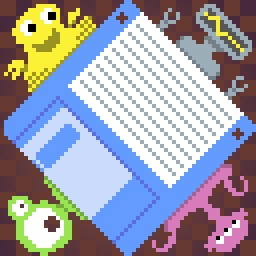
We love it when we find weird and unique indie games to tell you all about! Our alien friends to the left herald these occasions.
Found by Varyag on kitsunes.club, this may be the ultimate version of the Pico-8 version of other game phenomenon, not a remake of a classic arcade game but of id Software’s DOOM itself. And it has a great name: POOM. It’s made by freds72 on itch.io, and it’s free to download and play. Its levels are not ports of the original room, unless my memory is faulty, but smaller versions, but the general sense is still there. It even has a good remix of the first level music.
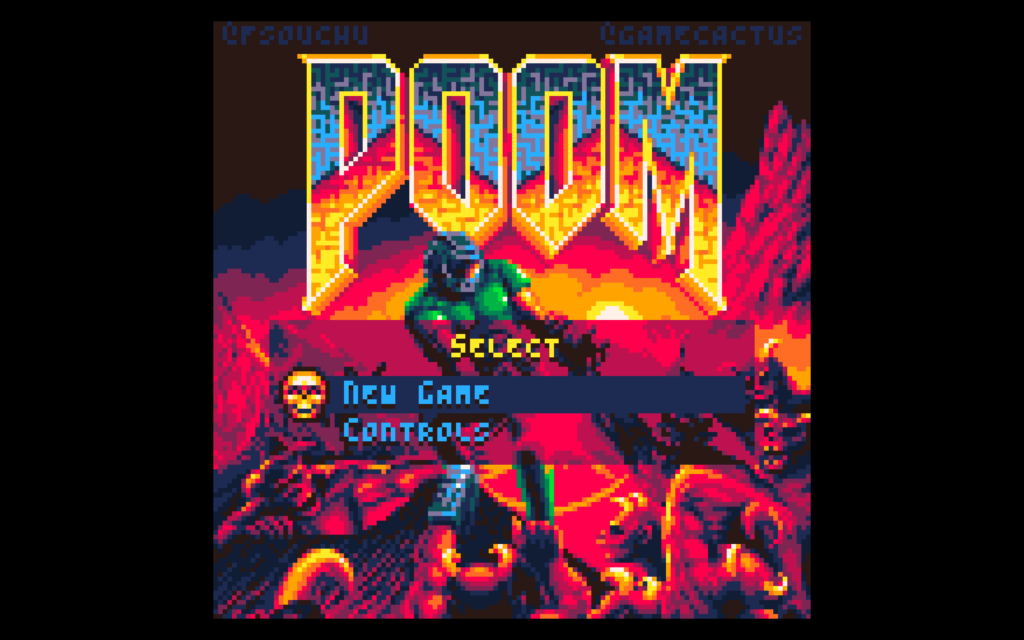

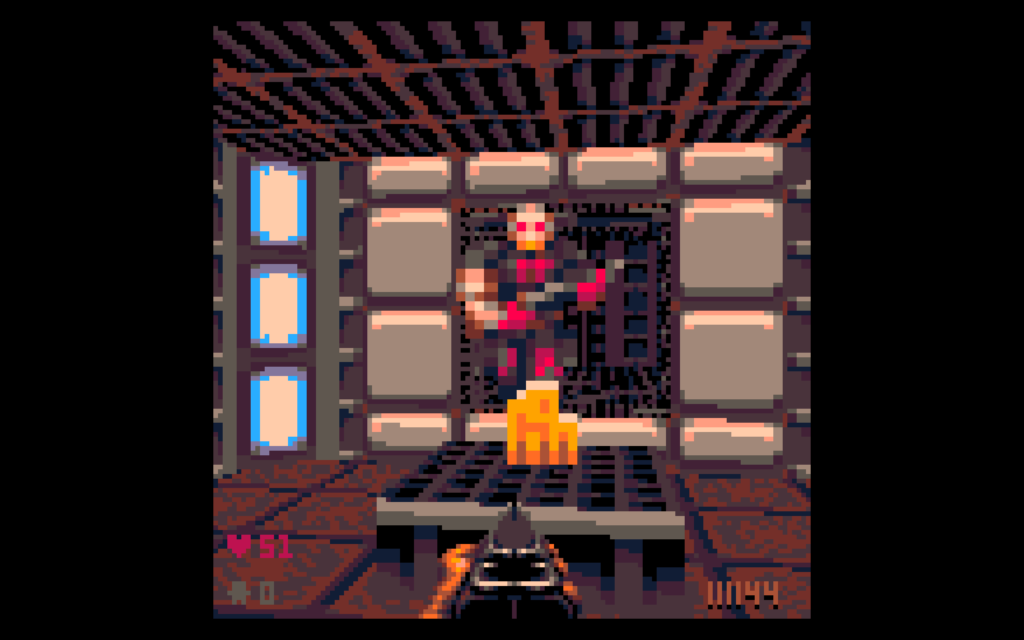
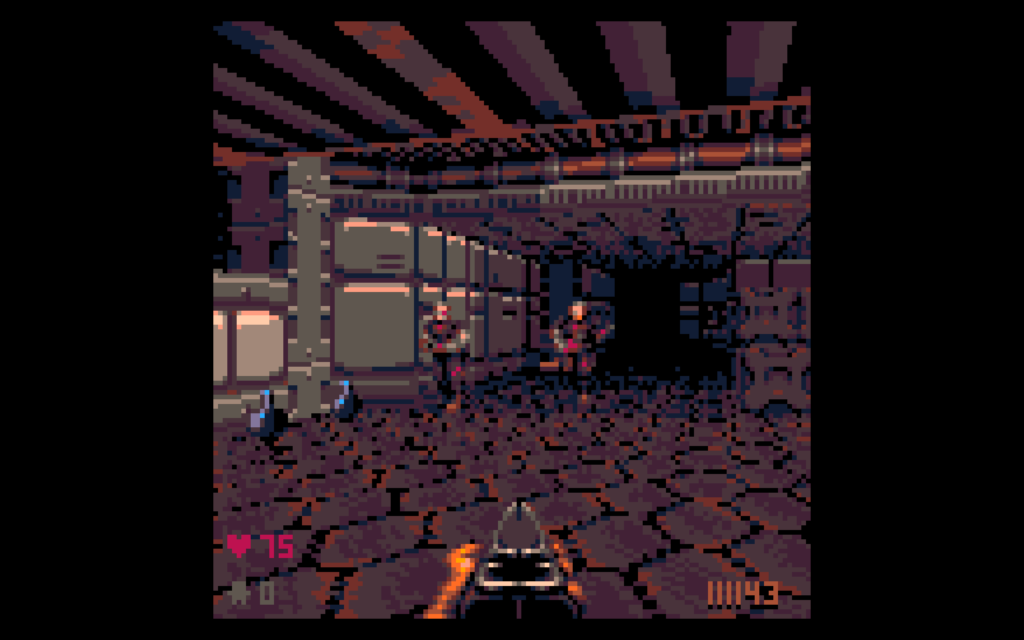
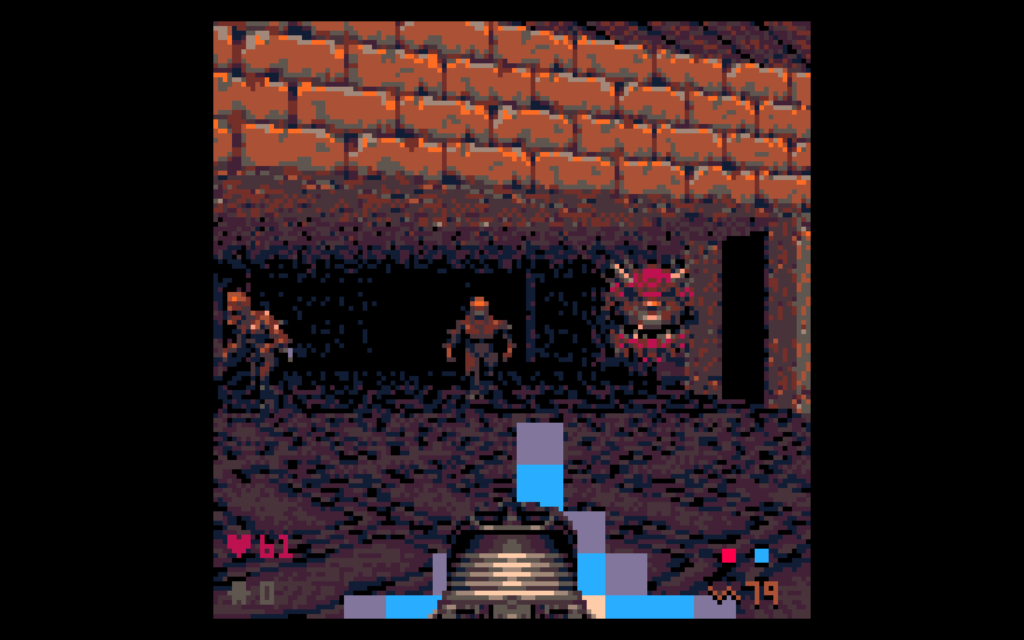
There’s many kinds of entertainment you can get from computers. Nominally we’re about games here, but what is a game? There are games implemented in Microsoft Excel. You can have fun at a command line. And you can enjoy making WordArt in Microsoft Word.
Thing about that. WordArt exists in “modern” Word, but it’s not the version that existed in earlier Windows versions. (I can’t bring myself to use the word modern without qualification for Office since they introduced that damn Ribbon and no I won’t let that die.) How to get to it? I don’t know, because Ribbon, but if you search for it in Word’s feature search interface it’ll pop it up for you, not show you where it is in Word’s UI, but just provide it, so if you want to use it again in future you’ll have to search for it again.
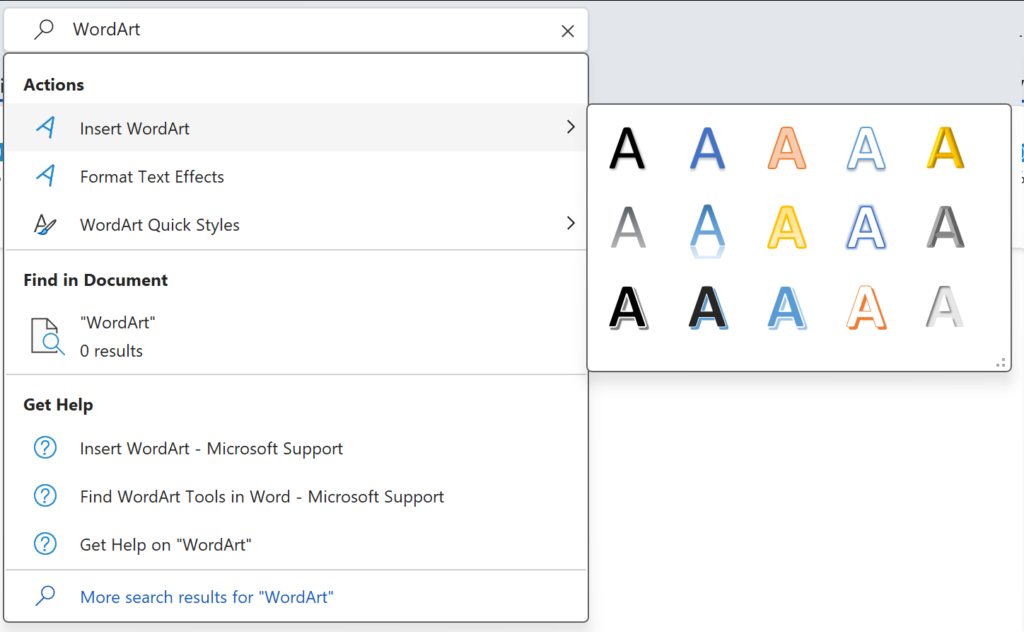
Yes, I I recognize this is already turning into a diatribe. But it goes to back up my point that Word is deep into its dotage, and the degradation of WordArt is just another symptom of that.
But as it turns out, the code for classic WordArt is still in Office, it calls out to us despite all the efforts of current-day Office’s hellish UI, and how fitting is it that that other relic of happier times, Popular Science, should be the publication to tell us how to reach out to it.

Justin Pot is the one who shows us the way there, and let me say, if you think my own writing style is comically florid, you have to see how they described the process.
Pot’s piece is good, but does slightly imply that the main interest of old WordArt is kitsh. That is a factor sure, but the old style of WordArt is intrinsically more powerful than the watered-down version. You can just do a lot more with it! Just look at that example! It is just a tool; what matters is what use you put into it, and I feel like Microsoft tamed the feature’s power mostly because it speaks of fun, and that is something they have made a conscious effort of stomping completely out of MS Office, the same reason they haven’t included easter eggs in “serious software for well over a decade now.
Anyway, to get the old WordArt back, you have to save your document in “Compatibility Mode,” which in this case means in the format of Microsoft Word from 97-03, as a .doc file. I wonder what other aspects of old Word remain in the software? Could it be that the classic menu bar is still in there somewhere? Oh be still my rapidly-beating heart!
Here is the whole video in case you missed it:
Here is the list, with personal hype level expressed in stars, none to five:
00:30 – Grounded. Your characters are “shruken at the hands of an evil corporation.” First, corporations don’t have hands, their employees do. Second, it’s interesting to see how corporations have joined mad scientists, sorcerers and alien emperors as “the evil.” Anyway, this looks mostly like Generic Action-Adventure Game. “Work your way through the campaign to uncover the mysteries of the back yard.” Like, where they buried the water pipe? Good luck with that. Two stars.
01:37 – ENDER MAGNOLIA: Bloom in the mist. Big contrast to the previous trailer. It’s a “return to the Ender Lily’s world,” just assuming you know what that is. From the trailer I assume the “Ender Lily” must be a really bad flower, because everything is dark and grim, but especially dark. “This once flourishing country sits atop a wealth of buried magic,” yet somehow it looks like Blade Runner. Points for using the word homunculi (16 points if you have the tiles for it) and not inventing another bullshit video game word like “the Aeinsward,” or “the Valarath” or some crap like that. Your character is told early on that “your eyes says[sic] that you long for death.” Sometimes the winning move is not to play. I feel bad about talking down the work of so many hard-working developers, but I don’t think it’s possible to make a game less appealing to me, personally. One star.
03:04 – Arranger: A Role-Puzzling Adventure. “Role-puzzling” is not a thing. Looks like it might be okay, but I’m rating my enthusiasm as generated by the trailers, and they give me flashbacks to the PULL word in Baba Is You, so: Two stars.
03:45 – Unicorn Overlord. Oh, I want to play the fantasy title game too! Gargoyle Emperor! Chimera General! Minotaur President! Looks to me like a Vanillaware joint. Checking: I was right. Reading the transcript, I’m struck by the word unleash, one of those overused videogame words. It literally means to let go, but because it sounds good it gets used for all kinds of things. But really, if it ain’t a dog, it doesn’t fit. Vanillaware’s cool though, so I’ve talked myself into looking forward to it. Three stars.
04:23 – Monster Hunter Stories. “Monster Hunter” brings to mind fighting dragons and behemoths. “Stories” suggests Scenes From A Marriage. Combined, I’m imaging getting hitched to Smaug. (This is probably the backstory to the classic anime Dragon Half, come to think of it.) Anyway, it’s Monster Hunter. You hunt monsters. It’s a remake of a 3DS game, discarding the (mostly) realistic look of other Monster Hunter games for cartoony human characters. I have a previous Monster Hunter on my shelf but I’ve never played it, so I can only rate this One star.
05:00 – Disney Epic Mickey: Rebrushed. I remember when Epic Mickey games filled the discount bins at Walmart, but I always liked the idea, and the internet-viral concept art that inspired them, and they were “directed” by Warren Spector. One thing that always confused me about Epic Mickey, of which the trailer reminds me, is the opening positions Mickey as an innocent interloper, but the content of the Epic Mickey games clearly indicate that these worlds are about him, as a character. He’s not a plucky underdog, he’s the center of the Disney-pocalypse. And yet, that’s interesting. Three stars.
06:07 – Shin Megami Tensei V: Vengeance. The title logo makes it look like it’s called Shin Megami Tensei V: Engeance. This being a remake, I’m just glad they didn’t call it something like Revengance, hah wouldn’t that be stupid. I don’t remember at this point whether a mainline Shin Megami Tensei game has ever appeared in English before. Maybe on the Playstation or Playstation 2? Sounds about right. (Checking: it was recent! 2021! Huh.) I think it defies belief that this isn’t yet another Persona game. Two stars.
07:41 – STAR WARS: Battlefront Classic Collection. Okay I was wrong, it’s not possible for me to be less interested in this. It’s exciting to some people or else they wouldn’t have made this, but I’m writing this, and I say, One star.
08:24 – SOUTH PARK: SNOW DAY! When your franchise stars a character who was once grounded by his mother for “trying to exterminate the Jews,” I submit that there is something deeply wrong with it. No stars.
There’s so many games here that I’m going to skip around a bit from here on.
10:23 – Super Monkey Ball Banana Rumble. It’s an article of faith now that there have been no good Monkey Ball games since Super Monkey Ball Deluxe, and the recent Banana Mania, which was primarily content recycled from the old games. I just picked up Banana Mania a couple of days ago and was reminded why I like the Gamecube-era titles so much, so what the hell, Three stars.
11:40 – World of Goo 2. World of Goo was beloved of many people, myself included, and I’ve also liked everything Tomorrow Corporation has done, so I’m really looking forward to this, even if World of Goo is a very hard act to follow. Five stars.
14:03 – Another Crab’s Treasure.That’s a great title. The trailer, itself, actually calls this game a soulslike, which I guess is just the word we use now when a game is meant to be hard. The game does fix my main issue with Souls games, their relentless dourness. It’s whimsical and charming! Three stars.
15:32 – Penny’s Big Breakaway. From some of the people who made Sonic Mania, which itself makes it worthy of examination. A 3D platformer in 2024 that isn’t Mario, who’d have thought it possible. Three stars.
16:13 – Suika Game Multi-Player Mode Expansion Pack. I’ve been a bit outspoken that I don’t really like this version of the concept, prefering Cosmic Collapse on itch.io. Paid DLC that lets you play against others does nothing to improve the concept for me. One star.
16:57 – Pepper Grinder. It looks a bit interesting, but it feels a bit like a cheat that the tunnels you dig close up behind you. Two stars.
17:26 – Pocket Card Jockey: Ride On! Originally a F2P mobile game by Game Freak as one of their occasional non-Pokemon titles, like Drill Dozer and Part-Time UFO, which always seem to be terrific. They released a 3DS port that was one of those games that critics (including myself) couldn’t stop gushing over. I’m so hyped for this that I’ve already bought it, as of this writing it’s on my Switch back at home waiting for me to get back and play it. Five stars.
18:16 – Snufkin: Melody of Moominvalley. A Moomintroll game! One where you play as his enigmatic, vaguely Link-like friend Snufkin! I’m in! Sadly its trailer is really brief. Four stars.
19:26 – Rare Games Added to Nintendo Switch Online. Five games are added: RC Pro-Am (NES), a classic; Snake Rattle & Roll (NES), challenging and a bit underrated; Killer Instinct (N64), which I never cared for but some people will like; Battletoads in Battlemaniacs (SNES), likewise; and Blast Corps (N64), which is very underrated, a launch game that helped define its system. All of these games except Battletoads in Battlemaniacs were previously collected in Rare Replay for Xbox One, but there is a feeling of coming home here. Overall: Four stars.
These releases are notable all because of Hiroshi Yamauchi’s decision not to buy Rare from the Stamper brothers at the dawning of the Gamecube era, which lost Nintendo Rare’s then-formidable reputation and coding prowess. Nintendo sold its 49% stake to Rare, and Microsoft bought controlling interest. The Gamecube took a substantial hit to its library, and Rare has never been the same. Despite a few distinctive hits (Banjo-Kazooie: Nuts and Bolts, Viva Pinata and Sea of Thieves) I think Microsoft has never really used them well. For a time they were basically devoted to making Kinect games! (Checking: in fact, Rare’s Kinect Sports was at that time their best-selling game since Microsoft acquired them! Shame that its being tied to an abandoned peripheral means it has had practically no lasting legacy.) I would suppose the return of these titles to a Nintendo system is part of the deal that enabled Goldeneye 007 to come to both Xbox and Switch, but that is only speculation.
RC Pro-Am and Snake Rattle & Roll, are extra notable for their copyright notice by Rare Coin-It, a Miami-based subsidiary of Rare, that seemed to be devoted to games that had arcade pretensions. I don’t know that, but a lot of their games released with that copyright have strange arcade affectations: attract modes, high score lists, and arcade structure. In particular: Slalom (which did get an arcade release, as Vs. Slalom for Nintendo’s Unisystem arcade platform), Wizards & Warriors, RC Pro-Am and Cobra Triangle. But these weren’t the only games that bore the Rare Coin-It copyright. I really don’t know why; maybe they were assign games that Rare thought might have potential as arcade games.
Back to the Switch Online collection, this move gives me hope that the Wizards & Warriors games, especially the first, and its sequel Ironsword, will make it there someday.

A new website about retro games! Both new to this blog, but also new in general, its first digest dated to October of last year! Bobbins’ Olde Tomb of Videogames covers much of the same kinds of things that we do on our Retro beat in a weekly digest format. The site is laid out like an email newsletter archive, but to subscribe link is way down the archive page, so if you want to subscribe to that particular type of content emission, that is where you can breathe it in. Aaaah!
So if you enjoy those kinds of posts here you might want to look into them, there! Their main focus seems to be Eurogaming, but items in the most recent issue also include a link to an interview with Kenta Cho and a Pico-8 remake of Amidar! It is worth brief yet intensive investigation, much like that of a dog finding a sudden biscuit. That’s a good thing, BTW.
Super Mario Maker. Not the one for Switch, with the Master Sword power up and Superball Flower and the like. The one for WiiU, with all the Amibo characters and that formerly had the website listing all the levels, that Nintendo took down because it is a company of good and bad, and for them software preservation is among the worst.
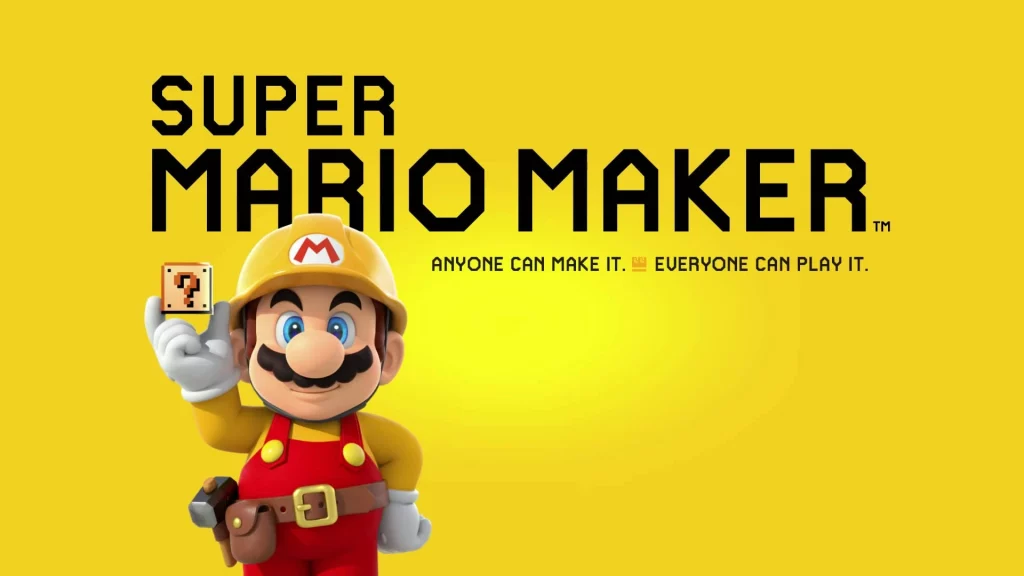
Super Mario Maker survives, for now, but its online services will be shut down in April, removing the vast swath of levels that players made for the software, because Nintendo can’t be assèd to preserve it. That sucks epically, gigantically, humongously, brobdingnagianly. But it’s Nintendo. They always do what they want, heedless of the opinion of others, and as I said, that’s both good and bad.
Remember Super Mario Maker? Most players used it to construct hyper-lethal deathtraps, literal abattoirs of Marios. (Tip: don’t Google image search the word “abattoir.”) Sure, I tried constructing reasonable levels of fair situations, but saying that online is like claiming I don’t watch television: it sounds pretentious. In practice everyone made at least one Smiling Hellscape, and yes I did make at least a couple.
But on the other hand there is speedrun culture, who attempts to overcome any challenge in a game no matter how ridiculous. In order to upload your level to the SMM servers, you have to complete it. That means it must be completable, even if it’s ludicrously unfair. In addition to the usual kaizo gauntlets, some players created levels that rely on prior knowledge to finish, and tackling one of those if you don’t have that information can be Promethean exercise in trial and error, emphasis on the trial.
That brings us to the Discord server of Team 0% (invite link). There mission: to show every level created for Super Mario Maker some love, and by love I mean, at least one completion, before the servers go dark for bad in a month’s time. SMM helps out by offering to give players uncompleted levels. And so they play on, no challenge to great, no gimmick too obscure. Recently they finished every level made in the year 2019. And they’re down to their last 1,000 levels overall!

One month to go. 1,000 levels to finish. Can they do it? They finished 1,000 levels back in the first week of their project, so it’s definitely possible. We’re watching them on their epic quest, and wish them luck. The good kind!
The latest of Josh Bycer‘s showcases studying and showing off a variety of indie games.
0:00 Intro
00:14 Gunlocked
2:28 Necrobouncer
4:16 Recon Control
6:29 Spidersaurs
9:55 Gloomgrave
11:17 Neon Blight

Sundry Sunday is our weekly feature of fun gaming culture finds and videos, from across the years and even decades.
It’s pretty short, at a minute and a half, but here is a brief and silly explanation of the classic arcade game Dig Dug. That’s all!
Dr. Sparkle is back with the 64th installment (Youtube, 55 minutes) of his quest to review every NES and Famicom game. He’s pretty far in! In about ten episodes, he figures he’ll reach the launch of the Super Famicom, which won’t be the end of his journey but will probably mean he’s in the home stretch.
In the meantime, ten games from 1990 are in this episode. They are:
Puss ‘n’ Boots: Pero’s Great Adventure – Technically a retread of a previously-covered Japanese game, this version has substantial differences so Dr. Sparkle decided to cover its U.S. version separately. A very easy game until the last stage where it jumps in difficulty, and then the final boss is absurdly hard. Dr. S expresses confusion why a game made to be so easy that it’s obviously intended for young children would become nearly impossible right at the last second. Personally, I suspect it was done because NES game publishers were terrified of the game rental market.
Wit’s: A Japan-only release, this is basically a de-luxe version of Snake, where your enemies have special abilities that you have to account for. Suprisingly, it’s an arcade port!
Captain Tsubasa Vol. II: Super Striker: A weird RPG take on Soccer, published by Tecmo and based on a manga and anime series. Instead of controlling a player or players completely in real time, the action pauses frequently and asks you what to do. The main screen is mostly animations down on the soccer field. It’s a unique take on soccer, but it’s not the only one: this is the second game to play like this on the Famicom. The Captain Tsubasa game series continues even today: the most recent releases, Dr. Sparkle tells us, are on PS4 and Nintendo Switch, although I don’t know if they take the menu-based RPG approach.
Jyuouki: This is simply a licensed Famicom port of Sega’s Altered Beast, and a pretty bad one at that.
Mahjong G-Men: Nichibutsu Mahjong III: Yet another Mahjong game, although with some interesting features, if you’re into Mahjong. That’s not Mahjong Solitaire, a.k.a. Shanghai, the Activision (and formerly PLATO) computer game where you remove tiles in matching pairs from a tableaux, but the Chinese Rummy-like game using tiles instead of cards. It also has a weird Tetris-like subgame involving Mahjong tiles.
The Pennant League: Home Run Nighter ’90: Yet another Famicom baseball game.
Dr. Mario: The classic Nintendo puzzle game! I always thought it was a bit inferior to Tetris, but then most games are, and that didn’t stop me from playing a ton of it long ago.
Pictionary: Based on the board game, and coming from infamous American NES publisher LJN. Dr. Sparkle is a bit harsh on developer Software Creations, but I think this effort looks pretty well-made to me. It’s not a classic, and it’s actually not really so much Pictionary as a kind of variation on the theme, where players play mini-games to reveal parts of a drawing and then try to guess what the drawing is of. It looks much like one of Rare’s many game show and board game adaptations and creations, and in fact if it weren’t for the Software Creations credit I’d have assumed that Rare made it.
Bigfoot: From Acclaim and developed by Beam Software. It’s fairly well polished for a Beam Software title, but has some weird ideas to it, including a weird control scheme for the events that involves tapping left and right on the control pad. I think the idea has a bit of merit, but that it was probably the wrong place to use it. A Bigfoot game would mostly be bought or given to kids, who would be the absolute last demographic you should expect to master a non-standard control scheme. I’m not one of those people who thinks making a game that goes about its play differently than most other games is always a terrible idea (see: most of what I’ve ever written about roguelikes), and I can kind of see why they did it, trying to make a race game that’s more than just holding to the right. It probably could have used a bit more iteration though.
Snake Rattle ‘n’ Roll: A game from Rare that they actually put a lot of effort into, and it shows. And some people really like it, it’s definitely got a cult following. Dr. S isn’t part of it, due to the difficulty of getting used to SRnR’s isometric style. I think what happened was, they had these routines laying around that they used in implementing NES Marble Madness, and decided to do another game that controlled in that kind of way. I think the game was poorly suited to a digital control pad; if it were controlled with an analog stick, or at least a digital control where diagonal movement is easier, I think it’s possible that some people who hate Snake Rattle ‘n’ Roll might be able to enjoy it better.
Anyway, here is the whole episode, start to finish: